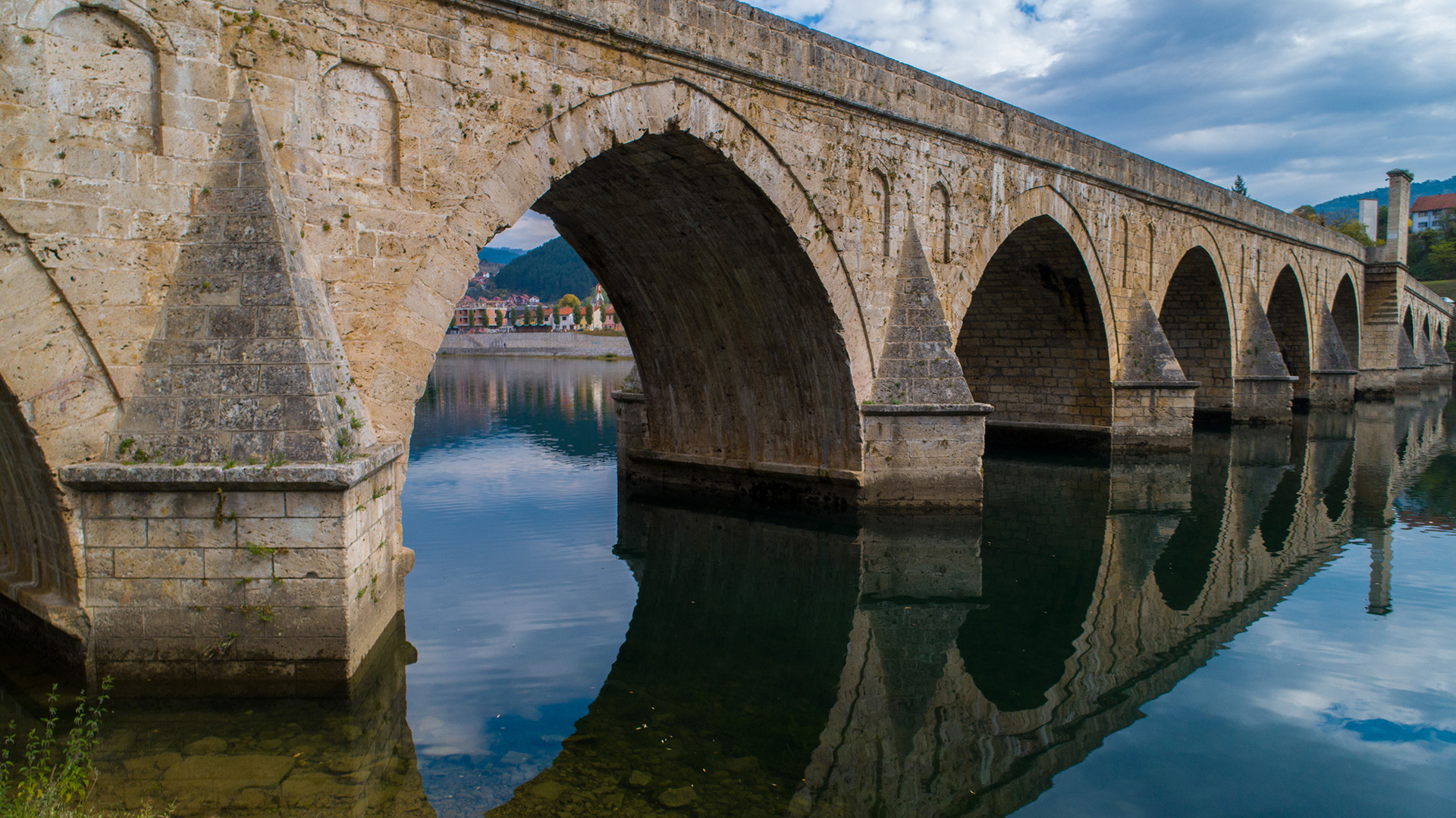THE UNESCO HERITAGE AND ANDRIĆ'S BRIDGE
Constructed in the 16th century under the orders of Mehmed-paša Sokolović, the grand bridge connecting the banks of the Drina River is the symbol of Višegrad.
Mehmed-paša Sokolović, born in Višegrad, was taken to Edrine as a child and later became the Grand Vizier, holding that position during the reign of three sultans: Suleiman the Magnificent, Selim II, and Murat III. At the height of his power, he commissioned the construction of the unmatched bridge over the Drina, crafted from Višegrad stone. This elegant bridge stretches for 179.5 meters, featuring eleven arches spanning 11 to 15 meters.
The bridge was constructed by Mimar Sinan, an architect whose talent and expertise are evidenced by an impressive 360 constructions, including eight bridges. Among them was one of the most majestic pieces of Ottoman architecture in our country — the bridge on the Drina River, inscribed on the UNESCO World Heritage List in 2007.
Under various political and cultural influences, this magnificent structure played the role that bridges do — it connected the riverbanks, people, cultures, and epochs.

Dado Ruvić
The Drina River, with a length of 346 kilometers, is among the fastest rivers in the Balkans. It is formed by the confluence of the Piva and Tara rivers. Along a section of its lower course, it serves as the border between our country and the Republic of Serbia. It’s loved by enthusiasts of rafting, fishing, and other water sports.
It’s worth noting that this is the “bridge” from Ivo Andrić’s novel “The Bridge on the Drina,” for which our writer, a Travnik native, received the Nobel Prize in Literature.
Find this QR code on the location:

































